|
By Allison Crowe, See the Triumph Co-Founder
When we started the See the Triumph campaign, I had no idea how many powerful, painful, triumphant stories I would hear from survivors of intimate partner violence. When we have heard from our research participants about their experiences with leaving an abusive relationship, how they did it, what challenges they had to overcome, what messages they’d like to share with others, I am blown away by the strength and perseverance it takes to triumph over abuse. One metaphor we have heard over and over is the notion of the uphill battle. Not just in leaving the abusive relationship but also after the person has left and begins the process of rebuilding his or her life after the abuse. Take “Barbara,” for example, who had been married for some time to her husband, “Steve,” whose abusive behavior only grew worse the longer they were married. (Note: these are not their real names.) Years into their marriage, he was diagnosed with two major mental health disorders, and soon became so paranoid that she was cheating on her that he would insist that he tangle his fingers in her hair while they slept so that she could not leave in the middle of the night without him knowing. Steve was in charge of their finances, drove Barbara to work and all other functions, started listening to her phone conversations, and checking her belongings every day before and after she came home. Any sort of refusals on Barbara’s part resulted in brutal beatings. Ultimately, Barbara was able to leave Steve and end the marriage, but only after many months of careful planning with Steve’s mother who knew of the abuse and wanted desperately to help. One of the biggest takeaways from Barbara’s story is not only the uphill battle she faced in order to get out of the abuse, but also the uphill battles she faced after leaving Steve and rebuilding her life. She described these uphill battles that she had to fight everyday as she established her new life, free from abuse. From negative attitudes from attorneys to unfair and dangerous custody arrangements to blame from her friends and family, to having to quit her job and find a new one when her boss was unsupportive of her needing a new schedule. Barbara faced a new challenge almost every day. And all at a time when she felt the most fragile after suffering from years of abuse. Today, Barbara is triumphant, strong, and resourceful. She had years of therapy to repair the damage Steve had done and enjoys reaching out to other people who are still struggling in abusive relationships. Even though most days are good ones, she still has those challenging days when it might feel like an uphill battle. She recently met a man who is kind, patient, and empowering. She had this to say when we asked her what message she’d like to share with other survivors who might be struggling, “You will get there. Little by little, just keep on fighting the uphill battle – even if there is a new hill every day.” Triumphing over abuse means not only ending the relationship, but then facing more challenges and uphill battles. Barbara is one of many of the courageous survivors whose strength and courage inspire us every day. We're thankful to Barbara and so many others who have shared these courageous stories with us. 10/20/2015 How Society Misses the Mark with Stereotypes about Survivors of Intimate Partner ViolenceBy Christine Murray, See the Triumph Co-Founder
It’s an honor and a privilege to have an inside glimpse into the lives of survivors of past abuse through our research and outreach with the See the Triumph campaign. Every day, I see and hear examples of ways that survivors show courage, perseverance, and compassion for others, both while they are involved in abusive relationships and after the relationship ends. Today, I want to share some of the characteristics that I’ve seen are common among the survivors who’ve shared their stories with us. These characteristics are inspiring, and they also challenge common stereotypes that society perpetuates about people who have been abused in intimate relationships. We know a lot about the stigma surrounding intimate partner violence, and this stigma often conveys that people who’ve been abused are weak, somehow to blame for their abuse, or unworthy of respect and support. The truth that I’ve learned from actual survivors, however, tells a very different story. Far from being weak, survivors possess qualities that warrant our admiration and respect. With each new story I hear, I become more convinced that society has it all wrong about survivors of abuse. Society will tell you that survivors are weak or that there must be something wrong with them to have gotten involved in an abusive relationship. Survivors themselves will wow you with their courage. You simply cannot believe how horrific the abuse is that some people experience in their relationships. We have heard many stories of abuse in which it truly is miraculous that someone could survive it. Many survivors’ abusers told them clearly and repeatedly that they would kill them if they ever left them. And yet, every survivor who has participated in our research--hundreds of them--did leave those relationships. Often, they left under great risk to their safety, and even at the risk of losing their lives. Many of them left with virtually no earthly possessions to their name, knowing that leaving their relationships meant that there was a long road ahead to rebuild their lives, essentially from scratch. The next time you’re tempted to judge a survivor of past abuse, or someone who is currently involved in an abusive relationship, think about how you might respond if you were living in such a dangerous situation. It is never as easy to leave an abusive relationship as it may appear from the outside of that relationship. Society will tell you that survivors are dependent on government resources or on their abusers or family members, and that they have a difficult time becoming independent. Although survivors may require some assistance as they begin the process of rebuilding their lives, we’ve heard remarkable stories of survivors demonstrating their resourcefulness as they move toward economic and other types of independence after the abusive relationship has ended. Imagine how hard it would be to completely have to rebuild your life, especially if you were starting from a place of having been beaten down physically and emotionally by someone who was supposed to care for you. And yet, many survivors do just this--they rebuild their lives. They make conscious efforts to recreate their lives, on their own terms. This is no easy task! It often involves a long process in which each step may feel like a monumental challenge. Because they often have limited financial resources, as well as limited social support, they show their resourcefulness each step of the way, figuring out challenges that may appear to be insurmountable at first. And yet, they figure out a way, whether that involves furthering their education, taking on new opportunities in their careers, or going in new directions in many other areas of their lives. Society will tell you, “once a victim, always a victim,” and that survivors of past abusive relationships are destined to move from one abusive relationship to another. Of course, some people do find themselves in multiple abusive relationships. However, in no way are people destined to repeat patterns of abuse. Many, many survivors of past abuse go on to live completely free of violence, whether they become involved in a new relationship or not. It takes a lot of insight to develop the self-awareness to break patterns of abuse, and we’ve seen this insight time and again in the survivors who’ve shared their stories with us. Many survivors have told us that they intentionally set out to learn about the dynamics and warning signs of abuse so that they would not repeat their abusive relationships in the future. Intense self-examination, such as through counseling, journaling, or meditation, is also part of the insight-gaining process that many survivors initiate following an abusive relationship. We must also remember that, even if people find themselves in a subsequent abusive relationship, abuse is always the full responsibility of the abuser. Abusers can be extremely deceptive and manipulative, and they typically don’t show their true colors until a relationship is established. I can think of several stories in which survivors in our research were in subsequent abusive relationships, and even in these relationships, they showed their insight by recognizing the abuse earlier than in the previous relationship and taking steps sooner to move toward safety. Society will tell you that survivors should be quiet about their stories and not air their ‘dirty laundry’ in public. But, survivors know that sharing their stories with others is crucial for helping others overcome similar situations, as well as for raising awareness about the impact of abuse on our society. You would be blown away by the compassion for others that many survivors possess. In fact, we heard the theme that the survivors in our research wanted to share their stories in hopes of helping others so often that it inspired us to start the See the Triumph campaign to begin with. Believe me, it would be easier for survivors of past abuse to leave their stories in the past once they’ve worked through their experiences. Keeping their stories to themselves would help survivors avoid the painful memories of the abuse. Telling one’s story is both empowering and terrifying at the same time. There is a huge risk inherent in telling one’s story, because there are no guarantees about how the listener will respond. And, for these reasons, it’s important for survivors to remember that it should always be their choice whether, when, and how to share their stories with others. The real-life experiences of survivors shatter many of the common negative stereotypes that contribute to the stigma surrounding intimate partner violence. Courage, resourcefulness, insight, and compassion for others are but a small sample of the inspiring characteristics that many survivors possess. Let’s continue to work toward making sure that these truths of survivors’ experiences are honored and celebrated in our society. By Allison Crowe, See the Triumph Co-Founder
This month at See the Triumph, we are focused on the theme, “No Stigma/Only Triumph” and are sharing information and resources to help change the way that society views survivors of IPV -- to a more triumphant, courageous, and positive view rather than some of the negative perceptions that still exist. When we started our campaign in 2013, one of our ultimate goals was to decrease stigma and uplift survivors. We are proud to say that one day at a time, we are reaching our goal. With every new Facebook follower, link to a news story, guest blog, or quote from a survivor in our research study, we are slowly but surely decreasing the stigma that exists. What exactly do we mean by the term, stigma, though? And how does stigma impact survivors? Here is a summary of the term, as well as the types and components of stigma. Stigma has been defined as a product of disgrace that sets a person apart from others. Various types of stigmas exist related to IPV, and some of our most recent research, along with Nicole Overstreet from Clark University, has revealed a Model that includes each of these types: (a) Anticipated Stigma: Expectations that others will react in stigmatizing ways if they find out about stigmatizing identity; refers to people’s belief that others will discriminate against or socially reject them; (b) Internalized Stigma: The extent to which people come to believe and endorse negative and stigmatizing views about themselves (i.e., based on views that are perpetuated in larger community); (c) Enacted Stigma: Perceptions of discrimination and prejudice experienced from others, as well as the extent to which people feel they have been the targets of others’ prejudice (e.g., negative comments, public humiliation, being denied housing, physical threats); (d) Cultural Stigma: Ideologies that delegitimize experiences of IPV (e.g., the belief that IPV victims provoke their own victimization), as well as the ways that negative beliefs and stereotypes about IPV at the societal level influence the experience of IPV stigmatization at individual and interpersonal levels; (e) Perpetrator Stigma: Stigmatizing messages directly from one’s perpetrator, which can include emotionally, verbally, and/or psychologically abusive actions that perpetuate the stigma surrounding IPV. In addition to the types of stigma, we have also studied four main components, or parts, of stigma: blame, isolation, negative emotions, and loss of status. Definitions of these terms are: (a) Blame: Holding survivors responsible for their own abuse; (b) Isolation: Survivors feeling and/or being treated as separated and apart from others as a result of the abuse; (c) Negative Emotions: Shame and other painful emotions felt about oneself, caused by consciousness of guilt, shortcomings, or impropriety. These can result in secrecy (i.e., hiding or concealing the abuse); (d) Loss of Status: Being viewed as “less than” or not as valued or as powerful, or not taken as seriously as others who have not experienced abuse. Taken together, the Model we have developed combines the sources with components of stigma, resulting in 30 unique categories of stigma faced by survivors of IPV. Now that we’ve described this, we want to hear from you. What type(s) of stigmas impact you the most? And what component of the term stigma fits best for your situation? Do our descriptions seem to match your experience, or are there parts of stigma that we might be missing? Help us continue to fight against this stigma by telling us how it applies to you. 10/11/2015 Why DO People Leave Abusive Relationships?By Christine Murray, See the Triumph Co-Founder
Part of the stigma surrounding intimate partner violence involves the blame that victims face for supposedly making a free choice to stay in an abusive relationship. This blame can come from many directions, including the abuser, friends and family members, professionals from whom victims reach out to for help, and cultural stereotypes. More evidence of this blame can be found in the countless articles written on the subject on “Why do people stay in abusive relationships?” For examples, check out the some of the following from Huffington Post, Psychology Today, Cosmopolitan Magazine, Women’s Web, and the Richland Source. These articles are important for helping people understand that the decision to remain in an abusive relationship is complex, and in many cases, it may feel like the safest decision for a victim at that time. It’s important for everyone to stand that leaving an abusive relationship isn’t an easy process, and in fact leaving may be more dangerous than staying, at least in the short term. It’s important that we ask other questions, too, especially to help eradicate the stigma that surrounds intimate partner violence. Recently, Allison and I worked with a colleague, Paulina Flasch, to ask a different question. We were interested in learning when and why people actually DO leave abusive relationships. To learn about the decisions that lead people to decide to leave, we drew upon the stories of 123 survivors of past abusive relationships, all of whom had been out of any abusive relationships for at least two years.* In our study, we learned about turning points, which are defined as the critical incidents or series of incidents that prompted survivors to begin the process of leaving their relationships. It’s important to note that these turning points didn’t always lead immediately to the end of the relationship--the planning and implementation of that process can take some time, especially if there’s a safety plan in place and the survivor needed time to build up the resources to be able to leave, once and for all. This research resulted in the identification of six specific types of turning points that prompted survivors to begin moving toward leaving their abusive relationships. A brief description of each one, along with a quote from a survivor that illustrates each turning point, it provided below: 1. Facing the threat of severe violence For some survivors, turning points happened when they realized they faced the risk of extremely severe violence, potentially even death. As one survivor said, “The turning point for me was waking up with a bruise on my neck, and even though at the time, I did not remember what happened, I knew then that my husband had tried to kill me.” 2. Changing their perspective about the relationship, abuse, and/or their partner Some people experienced turning points when they had changes in the way they viewed their relationships or their partners. These changes then led them to new realizations about the nature of their relationships, and these cognitive changes led to behavioral changes. One participant who experienced this type of turning point said, “He had isolated me from my friends, but one day, I went out with them anyway and was shocked at how nicely everyone treated me and that made me realize how cruel he was to me.” 3. Learning about the dynamics of abuse Turning points also may happen as survivors learn about the dynamics of abuse, which can then help them to see their own relationships as abusive and unsafe. For example, consider the following statement from a survivor who participated in our research: “I also have a friend who works as a crime scene investigator, and she helped me understand the pattern of escalation that my partner was following and the risks I faced by staying in the relationship.” 4. Experiencing an intervention from external sources or consequences Some survivors experienced turning points when other people or external consequences helped them realize that the abuse was wrong, such as if their abuser was arrested. Another example of this type of turning point can be seen in the following participant quote: “‘‘The second biggest influence was my Christian counselor who told me that it was okay for me to divorce. For me, I needed social support and affirmation from members of the Christian community that seeking a divorce was okay and that God didn’t want me to futilely suffer.’ 5. Realizing the impact of the violence on children For some survivors, turning points arise when they realize the negative ways their children are being impacted by the abuse. As one survivor in our study said, “‘‘The turning point for me was when I had my first child. It wasn’t enough for me to leave when he was abusive to me, but after my daughter was born, I felt like he was disrespecting her too and I would not stand for that.’’ 6. The relationship being terminated by the abuser or some other cause Finally, in some cases, turning points occurred when their abusive partners ended their relationships or there was some other external reason that the relationship ended, such as their partner dying. For example, one survivor said, ‘‘My turning point was when my ex-boyfriend left me for another woman.” Although this last category of turning points may seem more passive on the part of the survivor, in that it was their abuser that took action to end the relationship or some other external cause ended the relationship, it’s important to highlight the survivors’ agency after the relationships ended, in that they did not return to that or any other abusive relationship after the relationship ended. There were a small number of additional participants in our research who shared that there wasn’t a specific turning point that they could identify. In most of these cases, participants described more of a long-term process of deciding to end the relationship, rather than any identifiable turning points. Why are these turning points important to understand? For one, they challenge the question of why people stay in abusive relationships. That question implies that people stay forever and don’t leave. What we heard from the survivors in our research was very much in contrast to that assumption. Often, people in abusive relationships do realize their relationships are unsafe and would like for the relationships to end, or at least for the violence to stop, but it just may take time for enough evidence to arise before the person makes the ultimate decision to end the relationship. And, even after that decision has been made, they may not leave immediately, especially if their safety is at risk if they do so. This information about turning points also highlights that different factors impact people differently within an abusive relationship. For some people, deciding to end an abusive relationship begins as an internal cognitive shift in how they think about the relationship, and then behavioral changes follow. For others, external consequences--such as intervention from law enforcement--start the process. Still others may be more impacted by how the abuse affects their children, and this can be especially true of they originally were staying in the relationship because they thought that keeping the relationship intact would be the best arrangement for the children. The process of deciding to leave an abusive relationship looks different for every person, and it’s important for people to support survivors in their own unique process. The most important takeaway from these turning points, however, is simply the reminder that they provide that people DO leave abusive relationships. All of the participants in our research--over 500 survivors by now!--had been out of any abusive relationships for a significant period of time, and this fact alone challenges the common stereotype that people are destined to repeat patterns of victimization. As we continue our focus this month on the theme of No Stigma/Only Triumph, let’s honor the courage and strength involved in survivors’ experiences of these turning points. It is no easy task to leave an abusive relationship, and survivors’ willingness to step bravely into these turning points and begin moving toward safety is a testament to their ability to triumph over abuse. * Reference: Murray, C. E., Crowe, A., & Flasch, P. (2015). Turning points: Critical incidents prompting survivors to begin the process of terminating abusive relationships. The Family Journal: Counseling and Therapy for Couples and Families, 23, 228-238. DOI: 10.1177/1066480715573705 (Note: All quotes found in this blog post also can be found in this research article, along with other quotes and more detailed descriptions of the turning points discussed here.) 10/4/2015 Finding Your Inner Advocate!By Allison Crowe, See the Triumph co-founder
It’s October, so this month our focus is on “No Stigma/Only Triumph.” In order to fight the stigma that still persists about intimate partner violence, we need all the advocates we can get! So, today I encourage you to find your own inner advocate. But how do I do this? Where do I start? What do I care about? You might be wondering these sorts of questions, so I will share a little about my own process in hopes that this might help you. When Christine and I started the See the Triumph project, we knew we wanted to share the stories we’d heard from survivors in our research. We had interviewed a small number of women and were touched by the poignant experiences, messages to other survivors, horror stories of abuse, and ways the women we met had managed to overcome abusive relationships. This was about three years ago, but I remember our phone call after we’d completed the interviews as if it were yesterday! Both of us seemed to know we wanted to do something more than the traditional, scholarly writing about the research, but how exactly this would look we really didn’t know. One of our first ideas was to create a website to reach a broader audience. We had quotes from the interviews that we thought might work well displayed with pictures and images. We had to make sure that both of our institutional review boards (IRBs) would approve of sharing our research in this way. As the project grew, so did out knowledge of social media, and tools that are available for sharing information and reaching a broader audience. Honestly, when we started, Christine and I did not know much about social media tools, blogging, pledges and petitions, and how to be advocates of a project like this. Each See the Triumph milestone has been a learning experience, but along the way, one of my biggest take-away’s has been proudly adding the identity of advocate to my role as a university professor. And I have to say, it has been one of the most rewarding identities to claim. I remember learning about the role of advocacy during my master’s program in counseling and feeling intimated about how to advocate, what this would look like in practice, and finding time for this in addition to the other responsibilities of a professional counselor. Today, I want to share some of my own small lessons learned about advocacy through the See the Triumph project. My hope is that by reading some of these, you might think about them as they apply to your own passions and identities as advocates:
These are five simple reflections from my own journey with See the Triumph. My hope is that they might help those of you along the way in your paths towards advocacy. Thanks for reading, and as always, thanks for supporting our work! Best of luck with finding your inner advocate, or even beginning the process! By Christine Murray, See the Triumph Co-Founder
Our mission at See the Triumph is to end the stigma around intimate partner violence and to provide supportive resources for survivors of past abuse. This month, for Domestic Violence Awareness Month, we are focusing in on one goal: To raise awareness about the strength, resilience, and resourcefulness of survivors, as well as the need to end the stigma that survivors face. Our theme for the month is simple: No Stigma/Only Triumph. Why do we think it’s so important to end the stigma surrounding intimate partner violence? Through our research and outreach through See the Triumph, we’ve learned that there are many ways that this stigma poses added challenges for survivors of past abuse. Some of those ways are as follows:
If you know a survivor of abuse, or if you yourself are a survivor of abuse, then you know someone who knows how to triumph. You know all the challenges and barriers that survivors face each day--during and after an abusive relationship. You’ve seen how these challenges can be overcome in big and small ways. Triumph may occur slowly over time, but it also can be seen in leaps and bounds as survivors grow and overcome the barriers placed in their way. This month, we’re celebrating the many ways survivors triumph in their journeys to safe and healthy relationships. We look forward to celebrating these triumphs with you and to hearing your ideas about what it means to triumph over abuse throughout the month! By Christine Murray, Kristine Lundgren, Gwen Hunnicutt, and Loreen Olson
Members of the Traumatic Brain Injury and Intimate Partner Violence Research Group at the University of North Carolina at Greensboro Note: This blog post is also being published on the Stop Abuse Campaign blog. You can find this post by clicking here. In recent weeks and months, the National Football League (NFL) has faced intense scrutiny over its handling of the Ray Rice domestic violence perpetration case. The case dominated the headlines as two separate videos emerged, showing first that Janay Rice was left unconscious by the assault in February, and second that Ray Rice delivered a powerful punch to her face that knocked her unconscious. The graphic video left many people reeling about the severity of the abuse, as well as the minimal repercussions that Rice faced initially. As an interdisciplinary group of researchers who study the risk of traumatic brain injury (TBI) among survivors of domestic violence, we watched those videos through a different lens. We saw an example of one of the many types of domestic violence that places the victim at risk of experiencing a TBI. We cannot comment directly on Janay Rice’s health, but the video depicts that she lost consciousness, and loss of consciousness is one of the symptoms associated with an injury to the brain. In fact, it is the first symptom listed in the NFL’s Head, Neck, and Spine Committee’s Protocols Regarding the Diagnosis and Management of Concussion. The NFL knows a lot about concussion, which is a mild form of TBI. In December 2013, the NFL donated $30 million to the Foundation for the National Institutes of Health (NIH) to fund research on understanding and diagnosing TBI. This donation was made on the heels of a $765 million settlement that the NFL made in August 2013 with former players who sustained game-related injuries to the brain. Professional football players face a high risk for TBI. Current research--which the NFL does not dispute in recent court documents--suggests that as many as one-third of former players will experience one or more brain injuries with negative, often chronic health consequences. For at least two decades, the NFL has been studying and developing policies and protocols to prevent, identify, and respond to TBI among its players. As a result of these efforts, the league implemented rules designed to prevent TBI, such as banning the types of hits that are most likely to result in an injury. Furthermore, they adopted protocols that provide guidelines for examining injured players to determine the potential for TBI immediately following an injury, for managing symptoms, and for determining when players can return to play. Some of the major requirements of these protocols include that players who experience an injury which poses a risk for TBI must be assessed immediately, and if a brain injury is suspected, the player must be removed from the field right away, and then follow a detailed, phased process that involves daily monitoring in order to be gradually and safely reintroduced to game play. Any doubts that the NFL does not recognize fully the severity of TBI should be erased by the protocols’ stipulations that, during each game, each team is assigned an Unaffiliated Neurotrauma Consultant to provide an objective evaluation of potential TBI, and at each game there is a designated athletic trainer whose role is to watch the game from the stadium booth and be a spotter for potential TBI, using both direct observation of the game and video replay. Of course, the NFL’s policies and protocols regarding TBI address the actions of players on the field, and the NFL’s role and responsibility for protecting the safety and wellbeing of players’ relationship partners could be debated. However, the NFL is practicing a dangerous double standard when it takes the issue of TBI so seriously among its players, but ignores the harm of potential TBI resulting from a domestic violence event perpetrated by those same players. Based on the five steps in the NFL’s Return-to-Play Protocol following a diagnosed TBI, Ray Rice may have missed more games had he been the one knocked unconscious in the elevator, rather than the two games he was required to miss in accordance with his initial suspension from the NFL for knocking Janay Rice unconscious. Although there is growing recognition of the potential for TBI among survivors of abusive relationships, to date there has been relatively minimal attention to this issue in both research and practice related to domestic violence. However, current research suggests that as many as 30% to 74% of all victims of domestic violence who seek services from battered women’s shelters and emergency departments have a TBI (Kwako et al., 2011). Unlike other populations in which there is greater attention to the dangers of TBI--especially professional athletes--survivors of abusive relationships typically have far fewer resources and less immediate access to assessment and rehabilitation services when they experience a potential TBI. Furthermore, the cyclical nature of abusive relationships means that survivors who experience one TBI are at a greater risk of reinjury. Multiple TBIs place survivors at risk of even more serious physical and mental health consequences. The current dangerous double standard within the NFL regarding TBI experienced by players on the field and TBI resulting from a domestic violence incident underscores the need for more resources and cultural change--both within the NFL and in the general population--that will prevent further violence, provide support to survivors of abuse, and hold offenders accountable. As the NFL faces increased calls to work to prevent domestic violence among its players and take action when it occurs, one specific area in which the NFL can respond is by applying its vast resources and knowledge base surrounding TBI to improving resources for survivors of domestic violence who are at risk for sustaining this type of injury. Reference: Kwako, L. E., Glass, N., Campbell, J., Melvin, K. C., Barr, T., & Gill, J. M. (2011). Traumatic brain injury in intimate partner violence: A critical review of outcomes and measures. Trauma, Violence, & Abuse, 12, 115-126. doi: 10.1177/1524838011404251 |
Archives
April 2024
CategoriesAll About Intimate Partner Violence About Intimate Partner Violence Advocacy Ambassadors Children Churches College Campuses Cultural Issues Domestic Violence Awareness Month Financial Recovery How To Help A Friend Human Rights Human-rights Immigrants International Media Overcoming Past Abuse Overcoming-past-abuse Parenting Prevention Resources For Survivors Safe Relationships Following Abuse Schools Selfcare Self-care Sexual Assault Sexuality Social Justice Social-justice Stigma Supporting Survivors Survivor Quotes Survivor-quotes Survivor Stories Teen Dating Violence Trafficking Transformative-approaches |
Search by typing & pressing enter


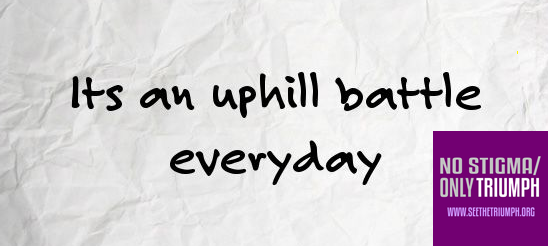
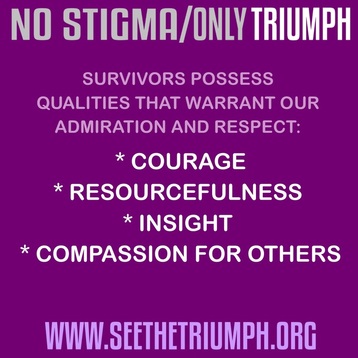
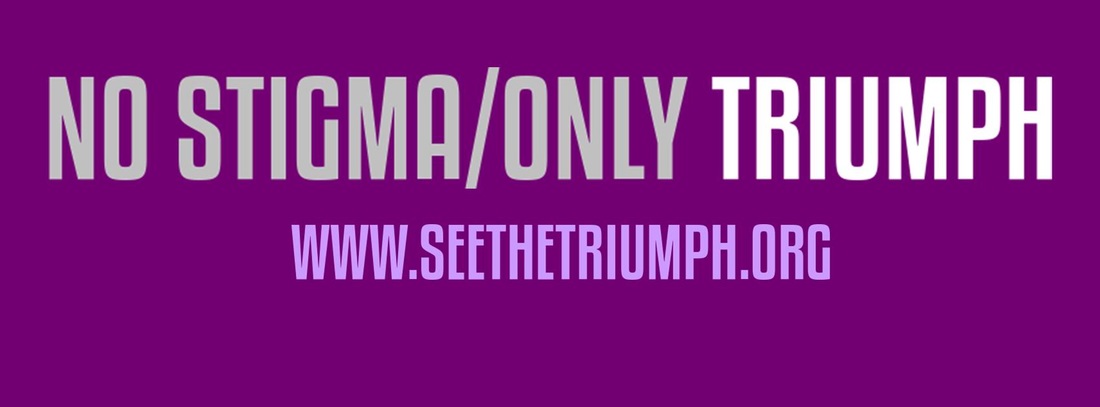
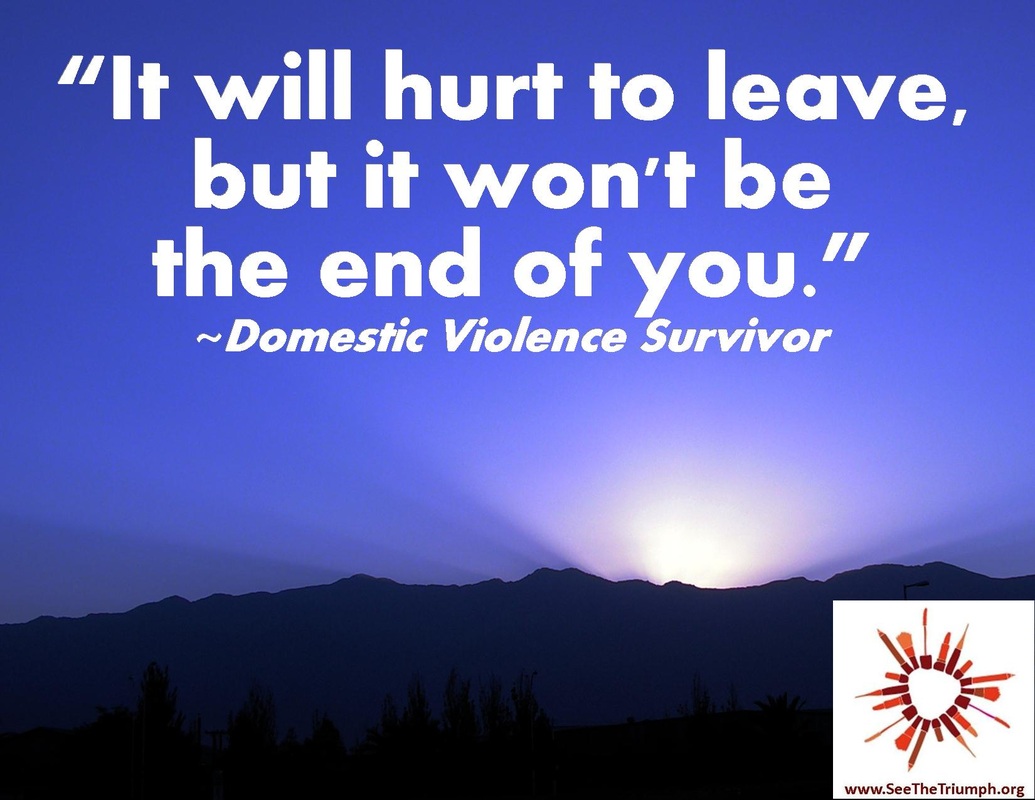
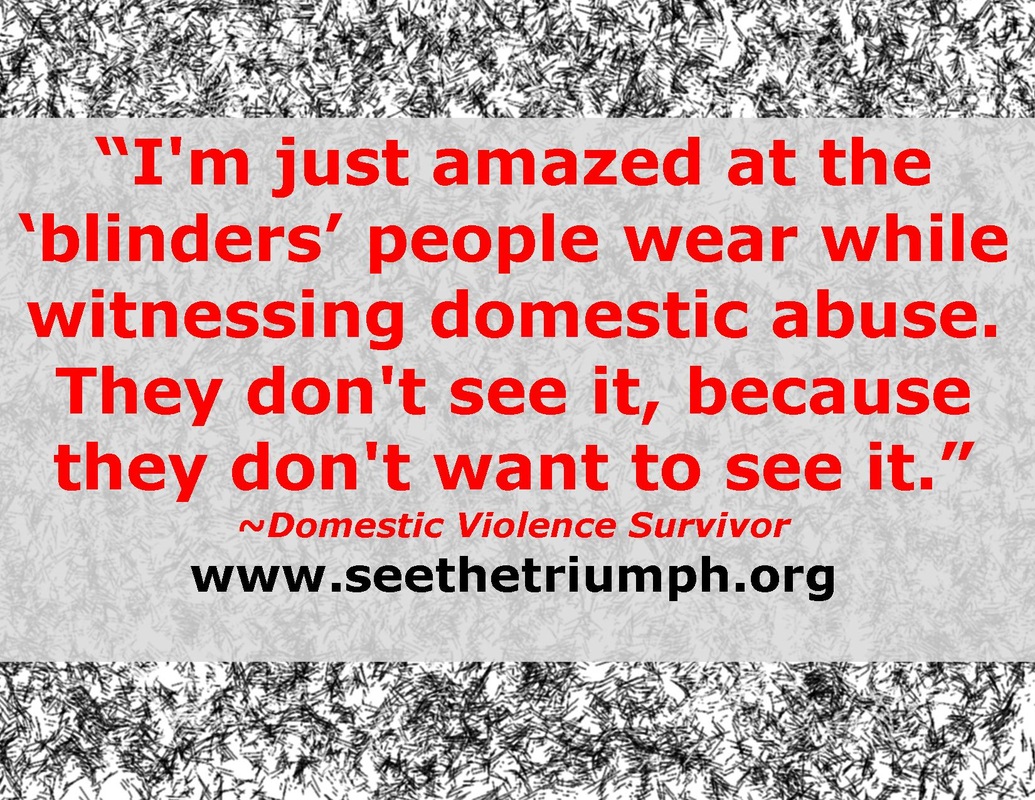
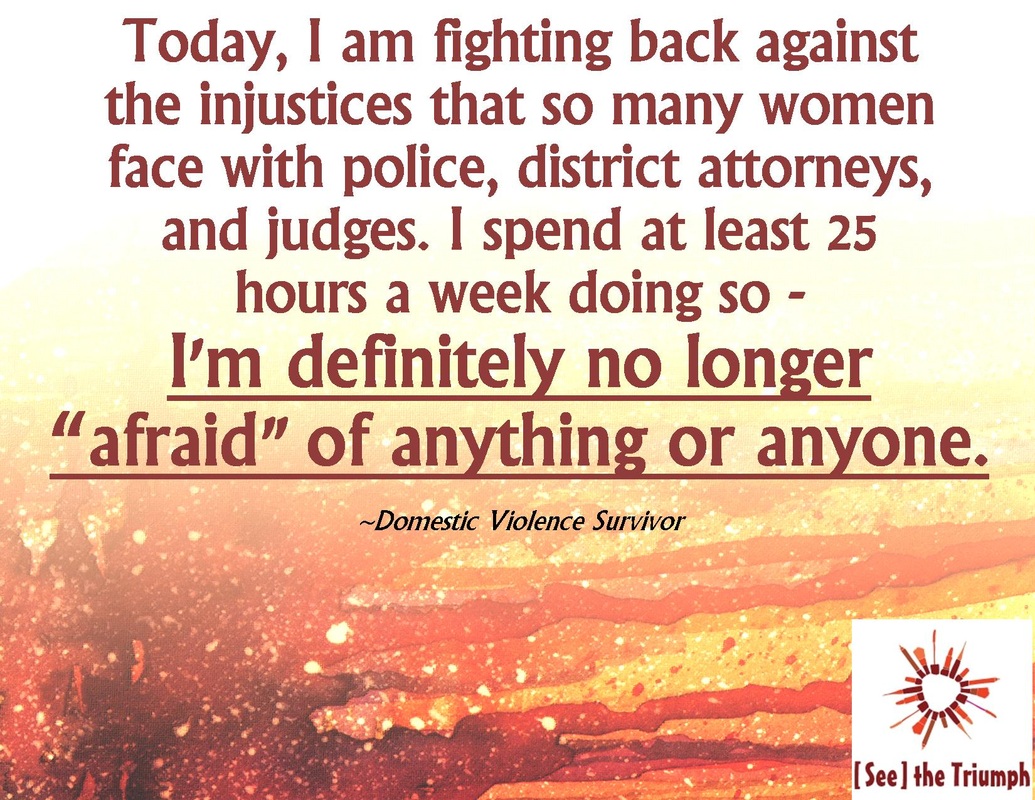
 RSS Feed
RSS Feed